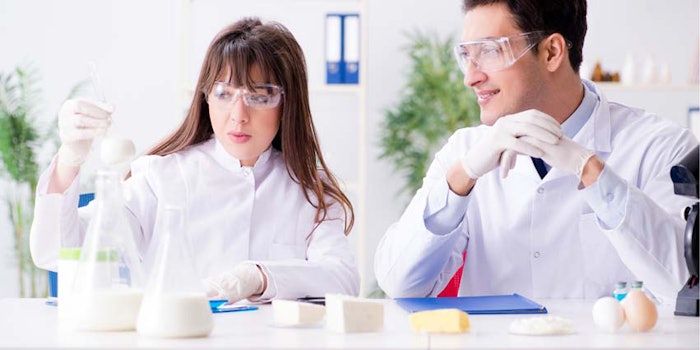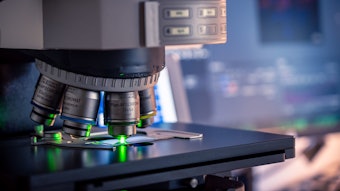
What's the difference between a lactate and a lactylate? The answer to this question relates to structure, function and the raw materials used to make the products.
In this case, both groups are esters of lactic acid. The following explains.
Lactic Acid
Lactic acid has the CAS number 50-21-5, and EC number 200-018-0. The structure of lactic acid1 is shown in Figure 1:
 Lactic acid is a hydroxy acid, containing both a hydroxyl group (-COOH) and a hydroxyl group. It is also called milk acid, since it was first isolated in 1873 by Carl Wilhelm Scheele in sour milk. It can be found in nature, made by fermentation, but can also be made synthetically. During exercise it is made in the human body.
Lactic acid is a hydroxy acid, containing both a hydroxyl group (-COOH) and a hydroxyl group. It is also called milk acid, since it was first isolated in 1873 by Carl Wilhelm Scheele in sour milk. It can be found in nature, made by fermentation, but can also be made synthetically. During exercise it is made in the human body.Lactic Acid Esters
Since lactic acid contains both a hydroxyl and carboxyl group, the hydroxyl group on lactic acid can be reacted with an acid to make an ester, and the carboxyl group on lactic acid can be reacted with a hydroxyl group to make an ester. However, they are very different, structurally, functionally and when used in formulations.
Reaction 1: Carboxyl Group of Lactic Acid Reacted with Fatty Alcohol (Lactate)
 This product is a nonionic that has polarity because of the hydroxyl group but is an oily product. It is stearyl lactate and has the CAS number 32530-14-9. This is used in cosmetic formulations as an emollient.
This product is a nonionic that has polarity because of the hydroxyl group but is an oily product. It is stearyl lactate and has the CAS number 32530-14-9. This is used in cosmetic formulations as an emollient.Reaction 2: Hydroxyl Group of Lactic Acid Reacted with Fatty Acid (Lactylate)
 This product is anionic and can be neutralized with various bases to make salts of differing HLB values. Its CAS number is 25383-99-7.
This product is anionic and can be neutralized with various bases to make salts of differing HLB values. Its CAS number is 25383-99-7.Neutralization
 Sodium stearoyl lactylate2, 3 is a versatile, U.S. Food and Drug Administration (FDA)-approved food additive used to improve the mix tolerance and volume of processed foods. It is non-toxic,4, 5 biodegradable,6 and can be manufactured using bio-renewable feedstocks.7 For use in food within the United States, the product must conform to the specifications detailed in 21 CFR 172.846 (see Table 1).
Sodium stearoyl lactylate2, 3 is a versatile, U.S. Food and Drug Administration (FDA)-approved food additive used to improve the mix tolerance and volume of processed foods. It is non-toxic,4, 5 biodegradable,6 and can be manufactured using bio-renewable feedstocks.7 For use in food within the United States, the product must conform to the specifications detailed in 21 CFR 172.846 (see Table 1).Table 1:
 This product is a natural emulsifier, foaming agent and foam stabilizer and is very useful in personal care applications. Typical products from this group are shown in Table 2:8
This product is a natural emulsifier, foaming agent and foam stabilizer and is very useful in personal care applications. Typical products from this group are shown in Table 2:8 Conclusion
ConclusionThe presence of two different reactive groups on a molecule can be used to make a series of related products. Their relationship is based upon a common raw material only; in this case, lactic acid. Derivatives will have different structures, properties—both physical and chemical, and function differently in formulations.










